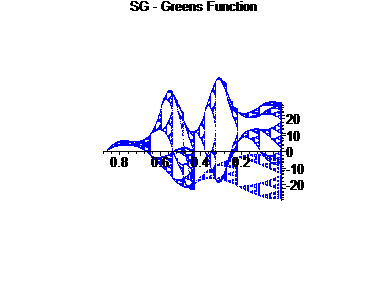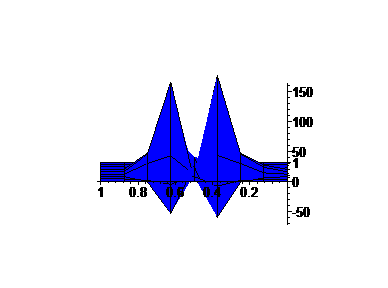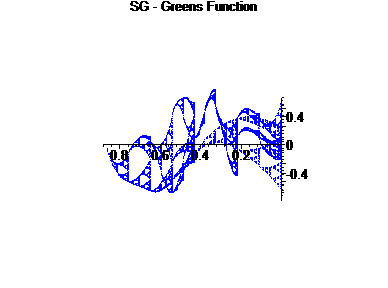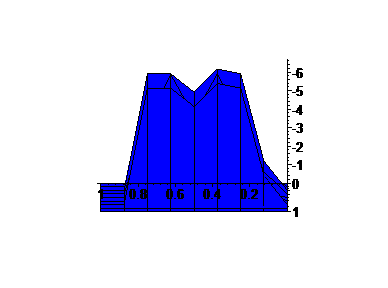SG2

|
Notice that, in the case where some eigenvalues have a high multiplicity (which we are in), there will be many cases where li = lj, and we are dividing by zero. Therefore, we ask the question of whether or not there exists a constant c s.t. [(li)/(lj)] ¹ c; aka, is there a gap in the in the structure of the quotients of the eigenvalues?
From the methods of spectral decimation, for each eigenvalue l, l = [ 3/2] limm ®¥ 5m lm, where lm0 = 2, 3, 5 and lm+1 = f± lm where only a finite number of f+ are applied. f± is defined as
|
Notice that f+ is orientation-reversing, and has a fixed point at 4. f- is orientation preserving and has a fixed point at 0. Suppose the last f+ is at index M-1. Then lm = f+(lm-1) Î [ 3, 5 ] and l = [ 3/2] 5k Y(lm) where Y(x) = limn® ¥ 5n f-n(x). So,
|
Note that
|
So, as long as
|
there will be gaps between [(Y(5))/(Y(3))] and [(5 Y(3))/(Y(5))]. Computationally, [(Y(5))/(Y(3))]2 = 4.248176580, and a gap should be located at [2.0611,2.4258].
We fix a = 2.25, and analyze the graphs of the Green's Function for this differential operator.
The first graph is G(x,[0,1]) for a = 2.25, with only a piece, [0,1] ÄSG displayed.

For the second graph, we examine the right ``edge" of the first factor crossed with the right edge of the second factor, to form a 2-d graph.

We fix a = 2.2, and analyze the graphs of the Green's Function for this differential operator.
The first graph is G(x,[0,1]) for a = 2.25, with only a piece, [0,1] ÄSG displayed.

For the second graph, we examine the right ``edge" of the first factor crossed with the right edge of the second factor, to form a 2-d graph.
